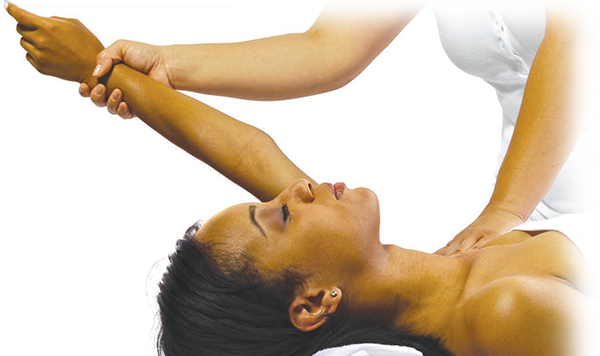After PREACTIVE
The trip to the doctor (if P.R.E.A.C.T.I.V.E. does not alleviate the pains and/or increase function)

If the P.R.E.A.C.T.I.V.E. regimen does not alleviate the pain or if the patient's treatment with an orthopedic surgeon does not alleviate the painful injury/condition, then physical therapy is a modality that involves assistance from a trained professional. At times, the doctor will prescribe an X-ray to evaluate the bony structures. This radiological modality offers many answers. It can evaluate the quality of the bone, joint changes caused by osteoarthrosis, alignment, healing of fracture, or abnormal bone production. A CAT scan can evaluate the bone in three dimensions. If there is a desire to evaluate the soft tissue structures, then an MRI scan is ordered. An MRI scan is a series of images of the soft tissues and structures around and within a joint. An MRI scan correlates with the clinical assessment of the patient's injured shoulder joint, and can help plan surgical intervention.
When a patient undergoes physical therapy, the goal is to increase function and to decrease pain. Physical therapy comprises of the following but is not limited to: soft tissue mobilization (deep or superficial), joint mobilizations, range of motion activities (active, active assisted, and/or passive), conditioning, endurance, and stabilization exercises, proprioception (joint position sense), strengthening activities (progressive resistive exercises), and modalities like ice, heat, ultrasound, electrical stimulation and kinesiology tape. In addition, a home exercise/ therapy regimen is undertaken.
At times there is enough soft tissue damage to cause mechanical irritation in the shoulder during activities of daily living or work. When there is persistent pain and dysfunction in the shoulder, surgical intervention can help and is recommended.
Once the patient decides to have shoulder surgery secondary to soft tissue damage, there is a certain amount of time before the surgery takes place. During this time, whether it is two weeks, two months, or six months, regaining motion or maintaining current motion is important. Prior to surgery, endurance and/or strength should be maintained as much as possible as long as more damage is not being done to the injured joint (this being subject to the treating doctor's recommendation).
Surgery is not without risk. After surgery there is a likelihood of loss of strength. Postoperative motion is compromised for a period of time and there is a risk of postoperative stiffness. The joint has to wake up after the surgery, the swelling has to subside, and the body has to heal. Your doctor, before and after surgery, might recommend an anti-inflammatory medication that does not increase bleeding time or involve platelets. These types of medications can help diminish postoperative inflammation and scar tissue formation. The goals after surgery are to regain motion and to increase function of the operated joint. Physical therapy and a home exercise regimen help a person achieve postoperative goals.

